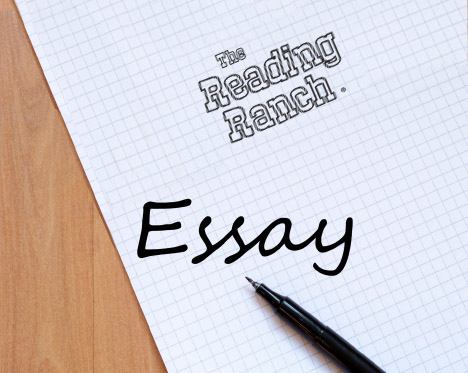Help your 5th Grader Write a Great Essay

Writing essays can be a daunting task for students. 5th-grade students have a strong foundation of writing skills to help them construct body paragraphs and express their ideas using complex sentences. Still, they may need an extra push to write confidently and expressively.
The most challenging task when writing an essay is starting the writing process and learning to be confident.
Helping students tackle the task and build their confidence in writing multiple types of essays such as a persuasive essay, an informational essay, or even a narrative essay such as short stories takes a lot of practice, focus, and support from instructors and parents.
Read on to see what types of strategies can help your 5th grades develop essential writing skills to help them write great essays.
Learning to Express Ideas
Pre-writing is a crucial step in the writing process. Fifth graders should be in a place in their writing journey where they can perfect all the pre-writing strategies before they even write a word of an essay.
This will set them up to successfully construct excellent five-paragraph essays consistently.
When your child sits down to write a five body paragraph essay, the very first thing they should do is read the prompt. Understanding what the prompt is asking for is the first step in being proactive about writing an excellent essay.
You want them to ponder these questions: am I writing a persuasive essay? Am I writing an essay on a topic requiring me to do my research? Will I need to list evidence? Am I writing a narrative story that requires figurative language?
These questions are essential for fifth-grade students to consider when analyzing the writing prompt to set them up for success during their brainstorming.
How to Successfully Brainstorm An Essay
One excellent way to get the brainstorm rolling is to have your fifth-grade student utilize a graphic organizer such as a cluster map as a way to write down all the related words or small phrases they can think of about the prompt.
The organizer will help get their creative minds rolling until they write something they are interested in or perhaps even excited about exploring further.
Brainstorming is a crucial component of teaching writing. This first step should be the most relaxed, no-pressure section for the student.
As a fifth-grader, your child will have a good idea of how to brainstorm different ideas on paper, but an essential part will be to organize these ideas into something of an outline.
Through brainstorming, students learn to think creatively to answer the prompt. Sometimes logical thinking is also required. For example, with a persuasive essay, students must brainstorm their arguments and develop reasons or evidence to back up their claims.
Supporting this step will allow students to perfect the details of the content they’re writing about and give them the main idea for their entire essay.
How to Turn a Brainstorm into an Outline
Encouraging your fifth grader to write a quick outline in a way that’s organized according to the five-paragraph essay format will give them a solid foundation to write their first rough draft.
These pre-writing skills are crucial in turning students from simple sentence writers into detailed five-paragraph essay writers.
Five-paragraph essays are the standard way to construct an essay, including writing an introduction, three body paragraphs, and a conclusion.
Using this format, your fifth grader should write a short and straightforward outline that showcases every paragraph’s main ideas and contents in logical order.
Instead of freewriting the essay off the top of their head, an outline in the five-paragraph essay format will help your fifth grader have a guide to help them construct the first draft of their essay and flesh out ideas when they write body paragraphs.
Constructing a 5 Paragraph Essay
Read below for a brief five-paragraph essay instructional unit to help you guide your child in writing an exceptional essay.
1) How To Write An Introduction
In the five-paragraph essay format, the introduction is vital in grabbing the reader’s attention and holding it throughout the essay.
When teaching writing, the introduction is explained as the initial place to set up the topic of the essay. It usually requires a direct address of the contents to follow in the form of a thesis.
A thesis statement is a sentence in the introduction that directly answers the prompt and has reasons and evidence for the writer’s claim. It’s like a short preview of what the students will write about in their body paragraphs.
Furthermore, students write the thesis at the end of the introduction paragraph and ensure it follows a specific sentence structure to make it stand out as the most critical part of the intro.
2) How To Write Body Paragraphs
An excellent way to help students be confident in their work is to help them build clear strategies or steps to tackle daunting parts of an essay, such as a body paragraph.
Acronyms are one good way to remember all the steps of constructing a remarkable body paragraph. For example, TEEA is a wonderful acronym to get your fifth grader started on the task.
TEEA stands for:
T: Topic Sentence
The topic sentence is the very first sentence of a body paragraph. It explains what your section is about and its main idea. Ideally, this should be one sentence long and directly explain the topic at hand.
E: Explain
For the second section, you will want your fifth grader to answer the following question: WHY are you talking about this topic or idea? Why is this important? This should be about 2 or 3 sentences long because you will want your child to use lots of details to support the idea in the topic sentence.
E: Example
In the third section, the student should prove what they explained about their topic by giving a solid, real-life example. This can be 2-3 sentences. The key here is to make the example applicable to the topic and explanation.
A: Analysis
Lastly, the analysis explains how the example supports your topic. This will probably be 1 or 2 sentences.
The analysis is the most tricky part of a body paragraph. The best way to get your child to think about this is to emphasize the how question. How does your example prove you are right? How does the example relate to the topic?
Using TEEA, your child will be able to construct a clear and strong body paragraph for almost any prompt or topic.
3) How to Write A Conclusion
Lastly, to conclude an essay, students must think about what idea they want the reader to leave with after reading their essay.
To start, students can use their introductory paragraph as a guide. They should restate their essay topic or thesis differently.
Next, students should summarize the main points made in the body paragraphs.
After this step, students can play the “so what?” game. Have your fifth grader think about what they’ve written in the conclusion, then answer the question, “so what?” Why is this important? Why should anybody care?
The very last sentence of the conclusion is a fantastic place to answer the “so what” question and leave the readers with a good impression or the desire for more information.
Using this instructional guide, with practice, your 5th grader will be able to construct logically sound and impeccably organized essays in no time.

The Reading Ranch Method
Struggling writers can experience various difficulties in any step of the writing process. The Reading Ranch Intervention Program is a research-based program to help students strengthen their writing skills in an interactive and dynamic environment. Our curriculum prides itself on being an interactive writing curriculum proven through various studies to immensely help struggling writers. Contact us today if you’re looking for help with your child who struggles in school and at home because they are stuck when they write and unable to keep up with their peers. We offer either online or in-person programs we feel confident we have something just right for every family.
Kiran Gokal is a freelance writer, teacher, and lover of the written word specializing in content articles, blog posts, and marketing copywriting. For the past three years, she’s been teaching bright young students all about reading and writing at The Reading Ranch®, while also lending her writing skills to different businesses and non-profits in the education sector.
